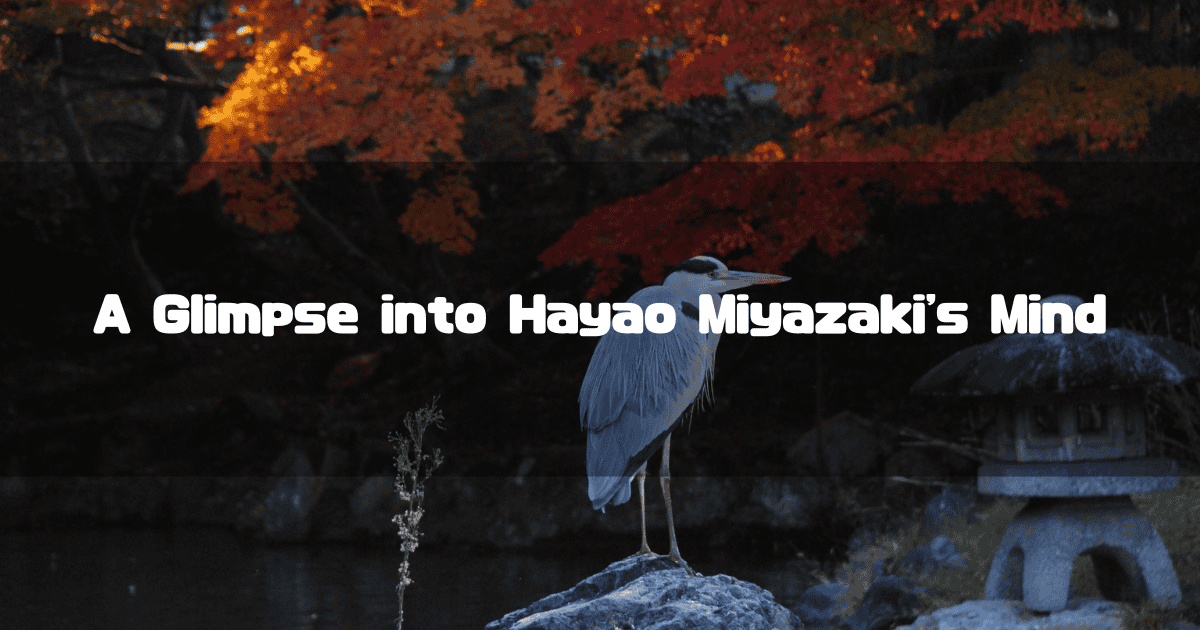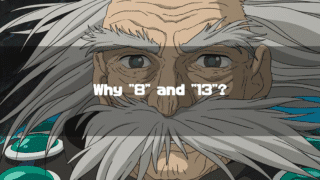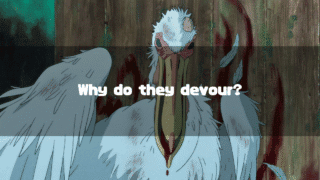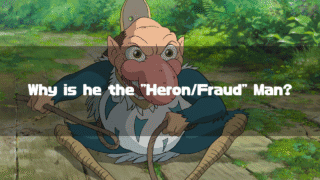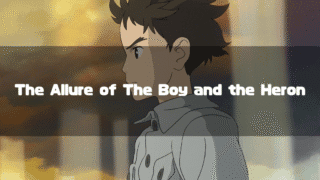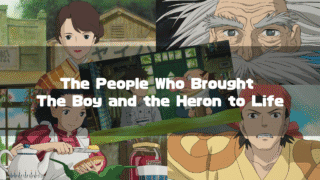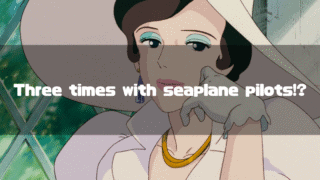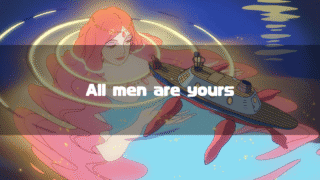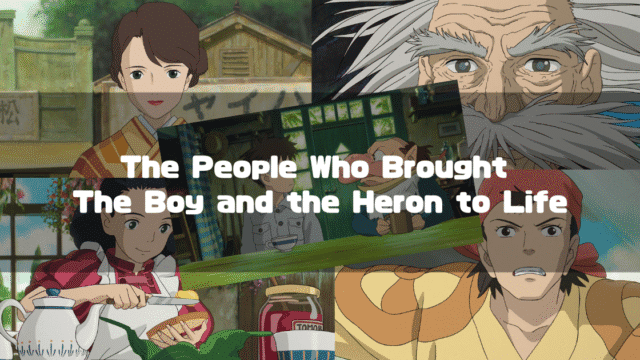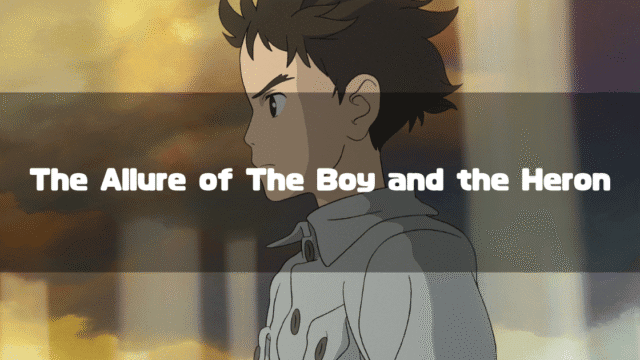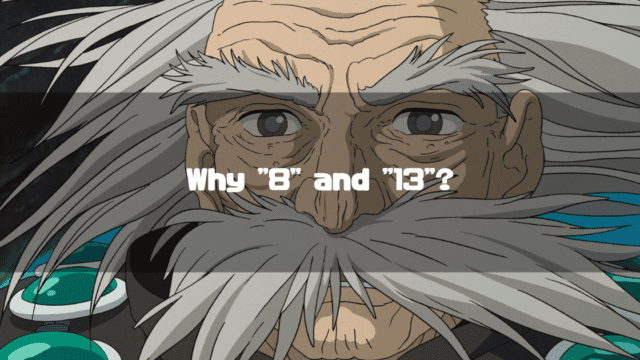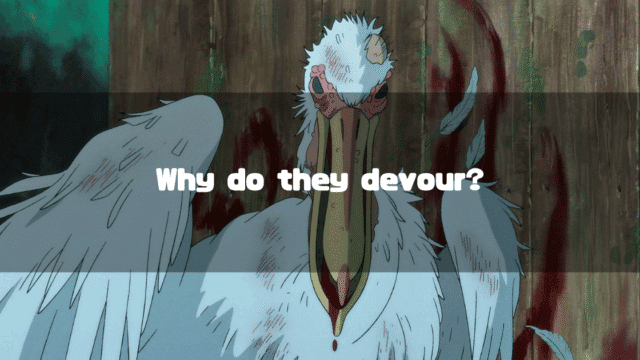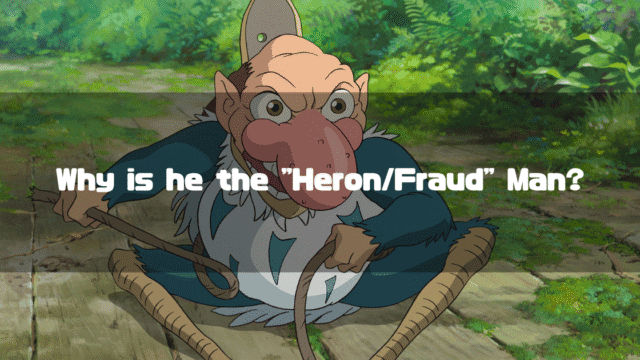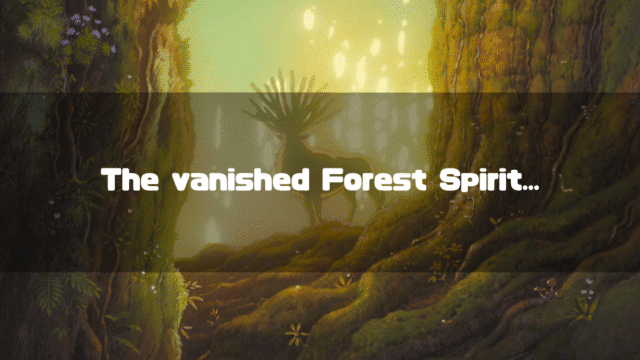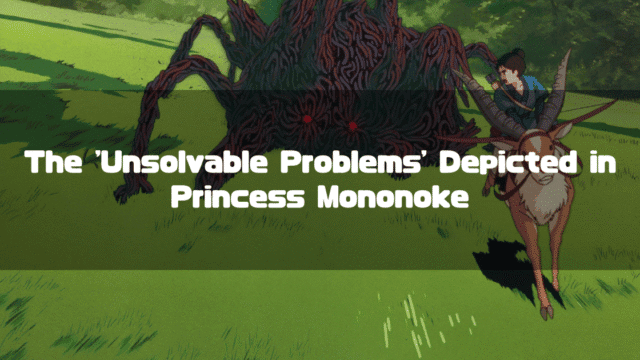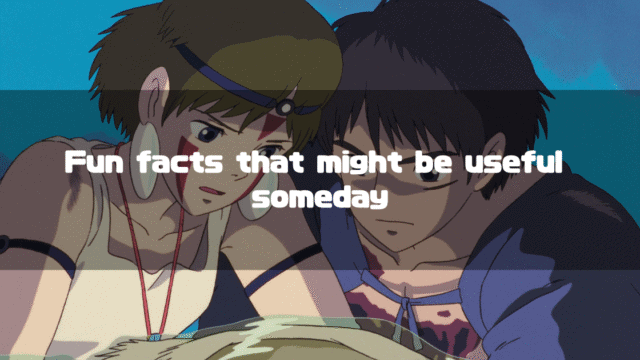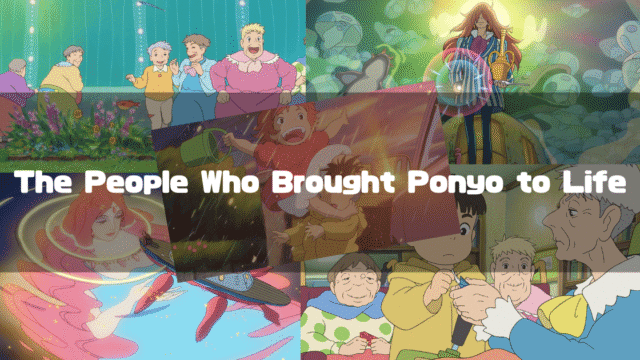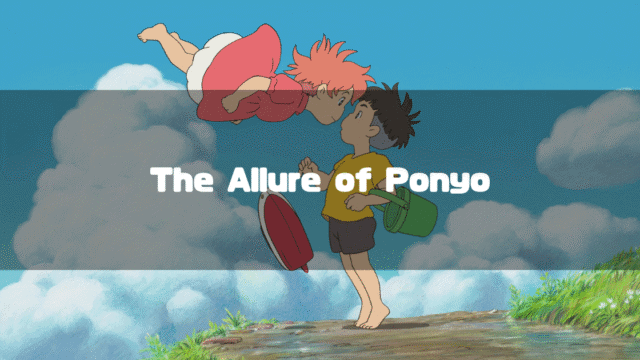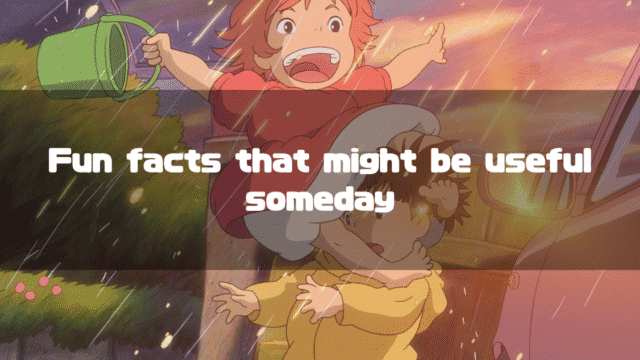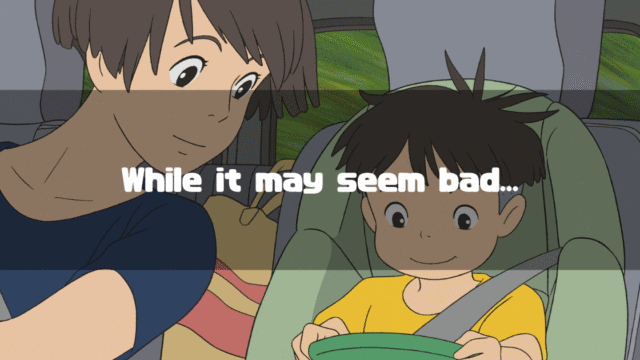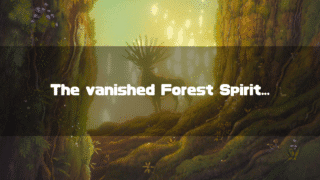The Boy and the Heron(Studio Ghibli Official) is a feature-length animated film directed by Hayao Miyazaki, released on July 14, 2023.
If I recall correctly, the first time the existence of this film was made public was at the very end of a documentary called The Never-Ending Man: Hayao Miyazaki(終わらない人 宮﨑駿, in Japanese), which aired on NHK BS in January 2017. There was a scene where he handed a proposal for a feature film to Toshio Suzuki. The title, The Boy and the Heron, was revealed in October of the same year.
After a long and anxious wait, the only thing released was the key visual of the “Grey Heron,” and no other information was provided until its release. However, as a result, I was blessed with the absolutely unprecedented good fortune of watching a new Hayao Miyazaki film without any prior knowledge. I want to thank Toshio Suzuki for that.
Immediately after its release, I heard comments like “incomprehensible” and “makes no sense,” but personally, I feel that “complicated” is the more accurate expression. Each and every element is depicted with multiple meanings and projections, making it incredibly “complicated.”
This time, I’d like to delve into the content of The Boy and the Heron. If I were to describe this film in one sentence, it would be:
The story of Hayao Miyazaki choosing to be a father.
That’s what I personally think it comes down to. However, this is obviously too simplistic, and it’s not the only thing I want to say, so I will add various layers to it.
First, let’s consider the “father as the son’s father,” something that has not been depicted in his works until now.
*Please be aware that the following text contains nothing but spoilers.
*This article is an English translation of the original Japanese article, 【君たちはどう生きるか】考察と感想-現れる3人の宮崎駿と冷たい石-.
Let an AI walk you through the highlights of this post in a simple, conversational style.
- A Shift in the Portrayal of Son and Father
Uncharacteristically for a Miyazaki film, Mahito’s father is carefully depicted as “the son’s father,” and his love permeates the story. This indicates a new main axis of a “father-son story.” - The Fantasy World = Hayao Miyazaki’s Inner World and His Works
The fantasy world Mahito wanders into is Hayao Miyazaki’s world of animation, his inner world, and also a world of “death.” The characters in the story are projections of Hayao Miyazaki himself (Mahito, Granduncle) and people related to him (Heron Man = Toshio Suzuki, Kiriko = Michiyo Yasuda). - The Challenge of Depicting a Young, Vibrant “Mother”
Distancing himself from the memory of his own mother who was bedridden, the depiction of Himi as a “young and cheerful mother” is a creative challenge in which Director Miyazaki confronts his long-standing theme of “mother” head-on, seeking healing and liberation. - Self-Criticism of Animation Production Methodology
The crumbling stone tower built by the Granduncle symbolizes Director Miyazaki’s own animation production methods (storyboard supremacy, harsh corrections) and his “closed world.” Mahito’s rejection of it as “malice-filled stone” signifies a denial of the past and a search for a new way of being. - A Message of Support for His Son Goro, and a Return to Fatherhood
The relationship between Mahito and his father mirrors the relationship between Hayao Miyazaki and his son, Goro Miyazaki. It contains the wish for him to “proceed on a new path that is not Ghibli-like” and a declaration to “support him as a father.” As a result, the film becomes a powerful message for both father and son.
- An Analysis of The Boy and the Heron
- The Father as the “Son’s Father”
- The Grey Heron’s Lure: “Your Mother”
- The Fake Mother and the World Mahito Wandered Into
- The Vivacious Depiction of Mahito’s Mother and Ponyo
- The Significance of Natsuko’s Existence
- The Mystery of the Granduncle’s Stacked Stones
- The Meteorite that Drove the Granduncle Mad
- Intermission: The Boy and the Heron as a Buddy Film – Hayao Miyazaki, Toshio Suzuki, and Michiyo Yasuda –
- The Boy and the Heron as a Time-Loop Story – An Incomprehensible Tale –
- The Mysterious Shrine Depicted
- Mahito’s Decision and Hayao Miyazaki’s Message Part 1
- Mahito’s Father and Hayao Miyazaki’s Message Part 2
- Summary and Impressions of the Analysis of The Boy and the Heron
An Analysis of The Boy and the Heron
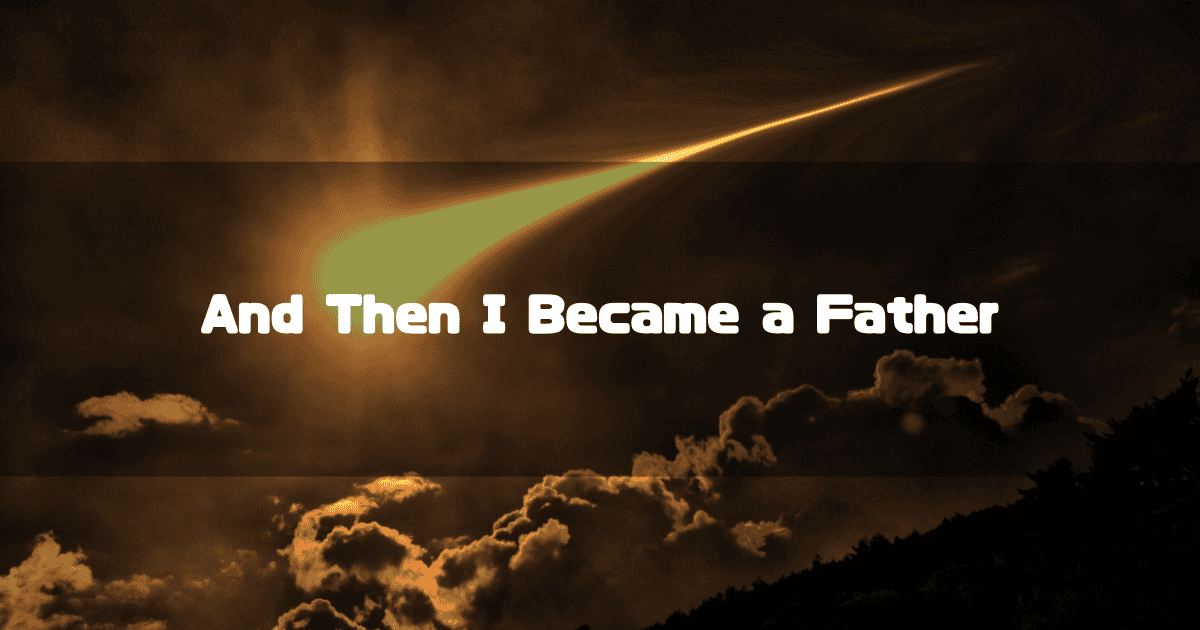
The Father as the “Son’s Father”
A clear difference between The Boy and the Heron and previous Miyazaki films is the lively depiction of the protagonist Mahito’s father—that is, the “son’s father” is vividly portrayed. Of course, I’m sure there are dissenting opinions, but for now, let’s look back at the fathers depicted in his past works:
- In Nausicaä of the Valley of the Wind, Nausicaä’s father, Jihl.
- In My Neighbor Totoro, Satsuki and Mei’s father, Tatsuo Kusakabe.
- In Kiki’s Delivery Service, Kiki’s father, Okino.
- In Spirited Away, Chihiro’s father, Akio Ogino.
- In Ponyo, Sosuke’s father, Koichi.
On a borderline case, Pazu’s father is also depicted in the film Castle in the Sky, but it’s hard to say he truly appeared in the work. Also, while Howl in Howl’s Moving Castle could be seen as a father figure to Markl, I don’t believe he fulfills the functions of a father.
The only previous work where a “son’s father” was depicted was Koichi, the father of the protagonist Sosuke in Ponyo, but he is sent off across the sea early in the story. At the very least, his interactions with Sosuke were never depicted.
However, in The Boy and the Heron, the interactions between father and son are clearly depicted, and scenes showing that he loves Mahito from the bottom of his heart are shown again and again. I’m sure I’m not the only one who was moved by the sight of him taking up a sword for Mahito’s sake.
But the question here is why such a depiction exists.
To understand that, we must consider the fantasy part of the story.
The Grey Heron’s Lure: “Your Mother”
The film The Boy and the Heron begins with a subtle, grounded “non-fantasy” feel (or so it seems). However, the protagonist Mahito is led by the “Grey Heron” into a world of fantasy, typical of Hayao Miyazaki.
What’s important is the fact that the words the Grey Heron uses to lure Mahito are “Your mother.”
It has become a well-known story now, but Director Hayao Miyazaki’s mother was bedridden during his childhood. It has been mentioned in various media that the inability to interact with his mother as a “child” during his childhood remains like a wedge in Director Miyazaki’s heart.
For a director with such feelings, not depicting “mother” would be an act of “escape.” That’s why Director Miyazaki has cunningly depicted “mother” in his works.
In other words, for Director Miyazaki, “mother” has been confined within his own “works.”
The world the Grey Heron lured Mahito into is that kind of world.
The Fake Mother and the World Mahito Wandered Into
Lured into the tower by the “Grey Heron,” the first thing Mahito witnesses is his mother. It seemed to be just as the “Grey Heron” had said, but it was a false mother made of water.
From this point on, the film descends into a fantasy world where it becomes difficult to grasp the “meaning” of what is depicted. However, considering that the world depicted afterward is blatantly similar to the worlds of previous Miyazaki films, it can be understood for now as a symbol of Director Hayao Miyazaki’s inner world.
This means that setting up a fake mother at the beginning was likely a declaration: “The mothers I have depicted so far were fake,” or “This time, I will depict the mother I am supposed to depict.”
At this point, it becomes clear that the protagonist Mahito is an alter ego of Hayao Miyazaki (Alter ego of Hayao Miyazaki, number 1, appearing in the work). This is also evident from the fact that Mahito’s father is engaged in the aircraft industry. Hayao Miyazaki’s father, Katsuji Miyazaki, was the president of Miyazaki Airplane.
The Vivacious Depiction of Mahito’s Mother and Ponyo
If Mahito is an alter ego of Director Miyazaki, then his mother would be an alter ego of Director Miyazaki’s mother.
And she was depicted not as the bedridden mother etched in Director Miyazaki’s heart, but as an extremely vivacious figure. Her age seems to be about the same as Mahito’s.
This brings to mind Ponyo.
It’s hard to understand without watching the production documentary How Ponyo Was Born(ポニョはこうして生まれた, in Japanese), but the slightly unapproachable old woman, Toki, who appears in Ponyo, also has Director Miyazaki’s mother projected onto her.
The reason Toki was depicted as an unapproachable character might be because his bedridden mother was a difficult presence to get close to.
And at the end of the story, Sosuke being hugged by Toki was probably a kind of dream for the director, and her running around energetically inside the underwater dome was likely his wish.
However… Toki was depicted as an old woman. And in a way, that is a grounded representation.
This time, Director Hayao Miyazaki removed that limiter and fully depicted his mother moving about energetically in her young form, which he had never met. And he did so in a way that it was recognizable.
I think some people might have felt something about the scene at the end of the story where he hugs such a mother… but well, I think it’s fine to see it that way. Yes. I think you’re right.
Thus, “depicting a young, energetic mother as she is” might have been something he had done implicitly before, but he had never depicted it head-on. This might have been one of the reasons Director Miyazaki decided to create a new work. In other words, he probably thought, “I still have things I need to do.”
The Significance of Natsuko’s Existence
The Boy and the Heron features Mahito’s biological mother and his stepmother, Natsuko. Why did this character, Natsuko, appear in this work?
There are probably two reasons.
One is that an internal reason was needed for Mahito to be fascinated by the mysterious tower. If Mahito had been satisfied with his “current situation,” there would have been no need to visit the mysterious tower, nor would he have injured his head.
Natsuko, as a source of “dissatisfaction” for Mahito, is used as the driving force in the early part of this story.
The other reason is that the relationship between Natsuko and Mahito also represents, in a sense, Hayao Miyazaki’s relationship with his mother.
The “feeling of being unapproachable” towards his mother who was bedridden when he most wanted to be doted on might have appeared in the story as Natsuko. If you think about it that way, perhaps Director Miyazaki decided to depict “all mothers” in The Boy and the Heron.
The Mystery of the Granduncle’s Stacked Stones
If the world Mahito wandered into is a symbol of Director Miyazaki’s inner world, then the stacked stones maintained in a delicate balance by the Granduncle can also be understood to some extent.
For that, we need to consider Director Miyazaki’s filmmaking methods.
It’s a fairly well-known story, but Director Miyazaki starts animation production when a certain amount of storyboards are ready, and makes the film while creating more storyboards.
“Storyboards” are often described as the “blueprint for an anime,” which sets out the cuts. Without them, all work would come to a halt. In Director Miyazaki’s case, the script progresses at the same time, so the film is produced without anyone, including himself, knowing the full story.
Therefore, especially after Spirited Away (or Princess Mononoke), comments like “the story is a mess” or “it’s not coherent” became more frequent.
However, Director Miyazaki himself is more aware of this than anyone.
And, considering such a situation, the precarious stacked stones the Granduncle was piling up probably represent the fragility of the works Director Miyazaki has created so far.
Alternatively, it could be seen as his own situation in old age, or it could represent Studio Ghibli, which once eagerly continued to hire full-time employees. In any case, I think those stacked stones were a realization that “what I have been doing” existed in a delicate balance.
If you think about it that way, that Granduncle is also an alter ego of Director Hayao Miyazaki (Alter ego of Hayao Miyazaki, number 2, appearing in the work).
In “Professional: The Way of Work – 2399 Days with Ghibli and Hayao Miyazaki,” which aired on NHK on December 16, 2023, Director Miyazaki himself stated that “the model for the Granduncle is Isao Takahata.” Therefore, the above idea is fundamentally incorrect, but… even after watching the film, it’s hard to believe that he represents only Isao Takahata.
It’s more natural to think that he tried to depict Isao Takahata, but he became mixed with himself. Film director Hiromasa Yonebayashi, who used to be an animator at Studio Ghibli, also says the following:
プロフェッショナル観ました。
— 米林宏昌 (@MaroYonebayashi) December 16, 2023
面白かったです。
僕は大伯父は高畑さんだけじゃなくて宮崎監督自身も入ってるように感じたけどどうなんでしょう?
他のキャラクターも多数の人が混ざっているように思います。
想像するだけなんで答えはないですけど…
I watched “Professional.”
It was interesting.
I felt that the Granduncle wasn’t just Takahata-san, but also had parts of Director Miyazaki himself, but what do you think?
I think other characters are also a mix of many people.
It’s just my imagination, so there’s no right answer, though…
— Hiromasa Yonebayashi (@MaroYonebayashi) December 16, 2023
In this article, I would like to delve into the aspect of the Granduncle as Hayao Miyazaki.
However, this alone might be a weak hypothesis for “the Granduncle is an alter ego of Hayao Miyazaki.” But if we consider the mysterious meteorite that drove the Granduncle mad, it might become a little more convincing.
The Meteorite that Drove the Granduncle Mad
What the Meteorite Signifies
The mysterious tower that had an ominous presence from the beginning of the story of The Boy and the Heron. The tower that drove the Granduncle mad was revealed to have been built by the Granduncle himself, and its core was a meteorite.
Here again, we, the viewers, wonder, “Huh? What does that mean?” Because the fact that “it’s a meteorite” is too outlandish.
However, the important thing here is the fact that the Granduncle was so captivated by that mysterious presence that he went mad, and he had been inside it all along.
In that case, isn’t that meteorite animation itself for Director Miyazaki? And the world that spread within it would be the world of animation that Director Miyazaki himself created.
More abstractly, it could be said to be a symbol of “something that strongly moved someone’s heart.” Not everyone can receive a shock like the impact of such a bewitching and beautiful meteorite. But in this world, there are people who receive such a shock and can dedicate their lives to just one thing. Director Miyazaki was one of them.
The many doors depicted at the end of the story could also be evidence of this. Those doors are doors that can leap across time and space in an instant. That is precisely the expression that animation is best at. Animation can express a moment as a long time, leap across a long time in an instant, and travel a thousand miles in three steps.
Also, the fact that the human-like parakeets in the strange world become smaller the moment they step out of the door seems to prove that that world was the world of animation. That door is a door between “fiction and reality.” Inside the door, parakeets can talk and behave like humans, but once they cross it, they return to being ordinary parakeets.
However, what makes this work complicated is that it incorporates the element of “the world of the dead” into that world. This was blatantly depicted in the work, and can be seen from the fact that Mahito’s mother was there. In other words, the world inside that mysterious tower is a world where
- Hayao Miyazaki’s inner world,
- the world of animation that Hayao Miyazaki continued to create, and
- the world of the dead for Hayao Miyazaki
are all jumbled together. This kind of ambiguity is what makes The Boy and the Heron so complicated.
At this point, I think it’s safe to say that Mahito’s Granduncle is “an alter ego of Hayao Miyazaki as an animation director.”
The Origin of the Meteorite
Even if the meaning of the meteorite that drove the Granduncle mad is acceptable, the fact that it suddenly appeared from the sky was something I found hard to accept.
However, it’s likely that the moment that meteorite was generated is depicted in the film.
It’s at the end, as the Granduncle’s world collapses, the 13 stones he piled up fall into a space-like world along with the crumbling world, and in that scene, you can see a shooting star.
That shooting star is probably the meteorite that drove the Granduncle mad.
That ominous stone gave the Granduncle great power, but it is an existence that remains in an endless cycle throughout eternal time, and the Granduncle is also such an existence.
At the beginning of the story, Mahito has not been able to overcome his mother’s death, and in a sense, he can be said to be trapped in an endless cycle, and Natsuko’s existence seems to be promoting that.
On the other hand, by reading the novel The Boy and the Heron that his mother left for him, Mahito succeeds in breaking out of that cycle and decides to accept Natsuko as his mother. The novel The Boy and the Heron creates an important major paragraph within the film.
And looking back, Mahito, who has broken out of such a cycle, would never choose to succeed the Granduncle and shut himself away in the cycle.
I think this part is well done.
And it becomes clear that the film The Boy and the Heron has this element of a time-loop story.
Intermission: The Boy and the Heron as a Buddy Film – Hayao Miyazaki, Toshio Suzuki, and Michiyo Yasuda –
The Heron Man as Toshio Suzuki
Now, if Mahito and the Granduncle are alter egos of Hayao Miyazaki, and that strange world symbolizes Hayao Miyazaki’s inner world and the world he has created, there is one(?) strange existence that remains.
The Heron Man.
The Heron Man was originally a grey heron, so like the parakeets and pelicans, it’s possible to think that the Granduncle brought him into that world, but that would create some contradictions or inconsistencies.
The parakeets and pelicans return to being ordinary birds the moment they leave the mysterious tower, but the grey heron had a proper personality even outside the tower and was able to lure Mahito to the tower.
The grey heron in The Boy and the Heron is a clearly different existence from the other birds. So what is that grey heron/Heron Man?
If Mahito is an alter ego of Hayao Miyazaki, then the grey heron who accompanied Mahito and supported his journey is… an alter ego of Toshio Suzuki.
He interacted with Hayao Miyazaki and Isao Takahata even before the establishment of Studio Ghibli, and the figure who continued to create animation with them was depicted as the Heron Man.
Come to think of it, The Boy and the Heron was the first “buddy film” since The Castle of Cagliostro. The grey heron, who at first appeared as a being who deceived Mahito with clever words, eventually became a good partner to Mahito and supported him.
If that strange world is Hayao Miyazaki’s “world of creation,” then the journey of Mahito and the Heron Man can be said to have expressed the journey that Hayao Miyazaki and Toshio Suzuki walked together.
In this sense as well, I think that the world inside that tower was, in the end, Hayao Miyazaki’s inner world.
Kiriko as Michiyo Yasuda
The moment you look at it from the perspective of a “buddy film,” you start to feel like you understand the meaning of the person who makes the story of The Boy and the Heron fundamentally difficult to understand.
That is Kiriko.
She appeared as an old woman, then for some reason appeared in a youthful form, and used mysterious “magic” as a person who helps Mahito.
In my opinion, I think Kiriko represents Michiyo Yasuda, who passed away in October 2016. There is no definitive evidence in the work, but considering that the grey heron is clearly Toshio Suzuki, it seems natural to see Kiriko as someone who also ran through life with Hayao Miyazaki. In that case, it seems reasonable to think that the model for Kiriko is Michiyo Yasuda.
Of course, I think there are various ways to look at it.
The Boy and the Heron as a Time-Loop Story – An Incomprehensible Tale –
Himi and Kiriko
At the end of the story, Himi and Kiriko return from a door that leads to the past world, and Himi chooses the path to become Mahito’s mother.
The fact that the phenomenon of “meeting the mother from the past” occurs makes it an obvious time-loop story, but since it happens in a world where time and space are mixed up, what is happening becomes even more incomprehensible.
Kousho Koujitsu: “The Boy and the Heron” Director Hayao Miyazaki talked about the new film. And Genzaburo Yoshino, in Japanese
According to this, after the first screening, Director Miyazaki said, “You probably didn’t understand it. There were parts I didn’t understand myself.” Personally, I think the “part I don’t understand” that the director is talking about is this timeline. I don’t think it’s a comment about the overall narrative.
For what it’s worth, here’s a summary of the timeline I came up with:
- Mahito’s mother is spirited away in the Granduncle’s tower. Kiriko, who follows her mother, is also spirited away.
- Having adapted to the strange world, the mother and Kiriko gain magical powers.
- Mahito wanders into the world created by the Granduncle with the now elderly Kiriko, but since two of the same person cannot exist at the same time, the old Kiriko becomes a doll.
- In the end, Mahito’s mother and Kiriko return to a world one year after the time they came from, while Mahito returns to the world a while after he was spirited away.
- Unable to find a successor, the Granduncle’s tower collapses.
It seems that Mahito’s mother wandered into the tower a long time ago, and considering that the Granduncle is still alive, it means that in that world, time passes incredibly slowly compared to the real world.
What do you think? Of course, I’m sure there are dissenting opinions! I expect there to be objections, especially regarding the handling of Kiriko. I don’t think I could figure out the “reason” why Kiriko had the same scar as Mahito even if I thought about it for a thousand years.
But… what we humans can understand are physical phenomena that can actually occur. The world created by the Granduncle and time loops don’t actually exist or occur, so it’s natural that we can’t understand them.
We have wandered into the magnificent, incomprehensible fantasy world created by Director Miyazaki. Isn’t that what fiction is all about?
When thinking about the world created by the Granduncle, I can’t help but remember the Minus Space from Evangelion: 3.0+1.0 Thrice Upon a Time.
The “Minus Space,” where everything can be redone, can be said to be inside Director Hideaki Anno’s head, or it can be said to be the animation production site.
The strange world that the Granduncle himself created may have been redone many times (was it in such a terrible state that it couldn’t be redone at the stage of the film’s main story?). In such a world, it’s pointless to think about “coherence.”
Anything can happen in that world, and it can happen at any time. It’s that kind of world, yes. I’m not just tired of thinking about it!
What Happened to the Mother’s Body?
In the main story, Mahito is told by the Grey Heron, “You haven’t seen your mother’s body, have you?” It seems that this is true, and Mahito has not recognized his mother’s death in the form of seeing her body.
There are two possibilities for this:
- The mother’s body was not in a state that could be shown to Mahito.
- The mother’s body was never actually found.
Normally, the former would be the case. It’s not strange at all if his father thought it would be too cruel to show the burnt body of his mother to Mahito, who is still a child.
However, assuming that she had obtained “the power of fire” in the strange world, the latter possibility is also quite conceivable.
Himi, who returned to the original world, has naturally lost her memory of meeting Mahito, but at the moment of her death, surrounded by flames, Mahito’s mother regains “the power of fire” and its memory, becoming a “fire spirit” to protect Mahito.
The reason Mahito saw his mother’s figure clad in flames in a dreamlike state is probably because of this.
Also, it could be said that the reason Mahito’s mother, who was spirited away, had “the power of fire” was because “Mahito’s mother, who became a fire spirit, went to that world with Mahito.”
See, it makes no sense, right?
It’s irresponsible for me to say “it makes no sense” after writing it myself, but I feel like the nuance gets across somehow. Of course, if I abandon the almost baseless insistence that she was “protecting Mahito as a fire spirit,” I would be freed from at least this incomprehensibility. But in the end, in the world of The Boy and the Heron, at least in the world where the Granduncle was, “cause and effect” do not necessarily occur along the normal time axis.
I suppose this “temporal coherence” part is what Director Miyazaki meant by “I didn’t understand it.”
The Mysterious Shrine Depicted
When Mahito wandered into the “underground world,” the first thing he saw was a mysterious, eerie shrine. It seems there was something inside it that had to be appeased with prayers.
If that world is “Hayao Miyazaki’s inner world” and “Hayao Miyazaki’s animation world,” then what was inside that shrine was “the murky something that Hayao Miyazaki still hasn’t put into his works.”
To “create a work” is to “expose oneself” in some form, but if you put everything inside you out there, it won’t be entertainment, and it won’t be something that should be shown to people in the first place.
You can’t create a work without exposing yourself, but if you expose yourself too much, it will fall apart.
Director Hayao Miyazaki probably injected his essence into his works on that fine line, but he must be aware that there is still something he hasn’t brought out. That something was sleeping inside that shrine. The fact that he prayed to it and appeased it can be taken as a declaration of “I’m not putting this in this work either, you know.”
However, there is a big difference between what he thinks he hasn’t shown and what actually hasn’t been shown. Perhaps we have received the “something” that Director Miyazaki thinks he has hidden.
Mahito’s Decision and Hayao Miyazaki’s Message Part 1
If the Granduncle is Hayao Miyazaki as an animation director, then the dialogue with Mahito at the end of the story was a dialogue with himself.
The Granduncle tries to make Mahito inherit his work and tells him to stack stones, but Mahito rejects inheriting the Granduncle’s work, saying, “They are malice-filled stones, not warm wood.” As a result, the world the Granduncle loved collapses, but what did that scene mean?
As we have considered so far, that world can be thought of as the world of animation that Director Miyazaki has created, but Mahito describes it as “malice-filled stones.”
What part is “malice-filled”?
Miyazaki’s works have fascinated many people, including myself, but the production site is a bit special. In addition to the aforementioned storyboard work, the process of correcting the key animation drawn by animators is a bit harsh.
Director Miyazaki, who was originally a genius animator, checks all the key animation drawn by the animators and corrects it with his own hands. The job of the animation director is to clean up Director Miyazaki’s roughs while understanding his intentions.
And those corrections are ruthless. The key animation that was painstakingly drawn is thrown away and replaced with something else.
In short, he wants to draw everything himself, but since he can’t, he has no choice but to use other people. At least, that’s how it would look to those around him.
The reason the production site holds together in such a situation is that Director Miyazaki’s corrections are ultimately extremely good.
Of course, not all animators thought the corrected version was better. There were probably many who beat up Hayao Miyazaki in their hearts.
In Ghibli Textbook 9: Whisper of the Heart(ジブリの教科書9 耳をすませば), a famous animator named Kitaro Kosaka also says the following while talking about director Kondo’s animation checks:
Kondo-san’s checks have two stages. When the key animation comes in, he first corrects only the characters. So the cut goes to the in-between animation staff without the acting being checked, and he checks the acting for the first time when the in-between animation is done. The key animator’s effort is not completely wasted like in Miyazaki-san’s checks, but this method is also very risky…
(Original Text in Japanese)
近藤さんのチェックは二段階なんです。原画が上がってくると、まずキャラクターだけを直すんです。ですから芝居はノーチェックのままそのカットが動画スタッフにまわり、動画が上がってきたときに初めて芝居をチェックします。宮崎さんのチェックのように原画マンの労力が全く無駄になるということは少ないのですが、このやり方はリスクも大きく・・・
Unlike Director Miyazaki’s works, where everything is corrected from scratch, I think it was a work that key animators could participate in without being too intimidated and with a sense of freedom…
(Original Text in Japanese)
一から直されてしまう宮崎監督作品とは異なり、現我慢にとってはあまり畏縮せずにのびのびと参加できた作品だったと思いますし・・・
It’s clear that the production site for Director Miyazaki’s works was a rather difficult place even for top-class animators.
Furthermore, it is also noteworthy that most of Miyazaki’s works are created by one person, Hayao Miyazaki, who handles the original story, screenplay, storyboards, and direction.
That is a very amazing thing, but considering that he even directly corrects the key animation himself, it can be said that Miyazaki’s works are a closed world created by the person named Hayao Miyazaki.
This “unique harshness of the production site” and the fact that it is a “closed world” are likely the reasons why what the Granduncle built up was described as “malice-filled stones.”
If you think about it this way, the ending means that Hayao Miyazaki decisively denied his own world. However, what Mahito denied was “malice-filled stones,” and it would be fine if they were “warm wood.”
Furthermore, it is also noteworthy that Mahito remembered what happened inside the tower. Mahito was in a state of being “spirited away,” and normally, those who return from being “spirited away” lose their memories of it.
However, thanks to the “piece of stone” he put in his pocket, he retains that memory.
Considering all these things, the meaning of that ending can be said to have been a declaration of “I will not forget everything I have created so far, but I will create animation (be involved in animation) in a different way than before.” Considering his age, it’s hard to believe, but considering what we’ve thought about so far, it’s not entirely strange.
However, considering the Granduncle’s words, “Only those with a blood connection can succeed me,” it can be thought that that ending had a more complex structure.
Here, let’s have Mahito’s father appear again.
Mahito’s Father and Hayao Miyazaki’s Message Part 2
As I mentioned at the beginning, it’s fine for now to say that Mahito is an alter ego of Hayao Miyazaki and his father is an alter ego of Hayao Miyazaki’s father, Katsuji, but if you look at the last scene of the story, you can see that it’s a little more complex.
Hayao Miyazaki is actually the second of four brothers, but Mahito ends up being the older brother of two siblings. Of course, there is a possibility that Mahito’s siblings will increase, but there is a big difference between an older brother and a younger brother.
What I want to say is that, when you combine the image of the family of four in the last scene with the Granduncle’s words, it seems that Mahito also has Director Miyazaki’s son, Goro Miyazaki, projected onto him, and Mahito’s father also has Hayao Miyazaki himself projected onto him. The Miyazaki family is a family of four (two sons).
The complicated thing about this movie is that multiple elements are projected onto a single existence, and they change from scene to scene, or exist simultaneously.
Ultimately, from this perspective, the content of the dialogue between Mahito and the Granduncle and the subsequent development can be seen as a message from Hayao Miyazaki to his son, Goro Miyazaki.
To consider the meaning of that message, we need to think a little more, but it becomes even more complicated when written down.
In the dialogue scene between Mahito and the Granduncle, Mahito has two people projected onto him, Hayao Miyazaki and Goro Miyazaki. The fact that such an existence ultimately desires that other world, and that Mahito returns to the “Miyazaki family,” is a wish for Goro Miyazaki to leap into a “world that is not Miyazaki-like,” and at the same time, it means that he, who was Mahito, is leaping into the world of being Mahito’s father.
Furthermore, including the fact that Mahito brought a “piece of stone” back to the original world, the message of the story would be, “Goro, we had our issues in the past, but I want you to continue making animation. However, your way of making it must not be the same as mine, and in the first place, you should have been making it in a different way. But I don’t want you to forget my wisdom and techniques. And I will support you as a father.“
What he wants him to continue making may not necessarily be animation, and it may refer to the work unique to Goro Miyazaki, such as directing the production of Ghibli Park.
As for the “support as a father” part, I am reminded of the figure of Director Hayao Miyazaki who straightforwardly praised Earwig and the Witch.
Loading video...
This interview was released in 2021, and even if it was recorded before that, he was right in the middle of making The Boy and the Heron. For those who know Director Hayao Miyazaki’s appearance in the production documentary of From Up on Poppy Hill, this figure of “straightforwardly praising” felt somewhat strange.
However, after watching The Boy and the Heron, I can think that that interview was also an expression of his stance of “supporting his son as a father.”
Also, including my personal wish, I think that a collaboration between Goro Miyazaki and Hayao Miyazaki will be realized again. If that happens, the meaning of why From Up on Poppy Hill was specially aired on Friday Road Show on July 14, 2023, when the movie was released, seems to become clear.
In any case, it can be said that The Boy and the Heron was a story that declared a “message of support for his son and a return to fatherhood.”
The above is what I thought after watching The Boy and the Heron, but since it has become too long-winded, I would like to summarize it briefly.
Summary and Impressions of the Analysis of The Boy and the Heron

Summary
The work The Boy and the Heron is more “complicated” than “difficult.” Its complexity lies in the fact that the existences of “the world inside the tower,” “Mahito,” “Mahito’s father,” and “the Granduncle” have multiple meanings, and those meanings change freely from scene to scene.
What “the world inside the tower” represents is:
- Hayao Miyazaki’s inner world,
- the world of animation that Hayao Miyazaki continued to create,
- the world of the dead for Hayao Miyazaki
As for “Mahito,” “Mahito’s father,” and “the Granduncle”:
- Mahito appears as an alter ego of Hayao Miyazaki, and in his dialogue with the Granduncle, both Hayao Miyazaki and Goro Miyazaki are simultaneously projected, and he ends as Goro Miyazaki.
- Mahito’s father appears as Hayao Miyazaki’s father and ends as Hayao Miyazaki himself (in the middle of the story, those two elements overlap).
- The Granduncle has Hayao Miyazaki as an animation director projected onto him.
Hayao Miyazaki’s father may also be subtly projected onto the Granduncle. While having such a “complicated” structure, the story created seems to have had the following two themes:
- To depict a young and energetic mother and release the “mother” confined in his own works.
- To depict “himself as the son’s father” while depicting the interaction between father and son.
On top of such themes, considering Director Hayao Miyazaki’s unique and harsh animation production methods, the Granduncle’s stacked stones in the story, the dialogue between Mahito and the Granduncle, and the collapsing tower, the following can be considered as the final messages depicted:
- My animation production method was harsh and “malice-filled stones,” from now on, I will be involved in animation as “warm wood.”
- To support my son’s creative activities as a father.
Considering Director Hayao Miyazaki’s age, I don’t know how long he can be involved in animation production, but watching The Boy and the Heron, I felt that he has no intention of quitting animation production at all. I admit that my personal desires are heavily included.
So far, I’ve tried to be pretentious and do an “analysis,” but from here on, I’ll state my honest personal impressions.
Joy and Confusion of the First Viewing
What was special about The Boy and the Heron was that there was no promotion at all. It was revealed by producer Toshio Suzuki that it was “a fantasy,” but other than that, only the key visual was revealed.
The Wind Rises had almost no fantasy elements, so in the scene where Mahito enters the tower, I was very excited, thinking, “Oh! The Miyazaki fantasy world is finally open! This is it, this is it, this has been a long time coming!”
However, on the other hand, the structure of “into a mysterious world” was clearly Spirited Away, the fantasy world depicted afterward was clearly reminiscent of previous Miyazaki works, and the end of the story was “Balse.”
I couldn’t help but think of at least Castle in the Sky, Spirited Away, Ponyo, Howl’s Moving Castle, and The Wind Rises.
In that case, I was a little confused about how to think about what I was watching, but on the other hand, there were parts that I could only think were intentionally incorporating elements of previous Miyazaki works.
I think, like many people, the fresh excitement of having no prior information and honest confusion were what I felt on my first viewing.
However, since I also wanted to write my impressions on my blog, this article is the result of several days of thinking after watching it in the theater. It may be a little far-fetched, but I don’t think it’s too far off.
The Scary, Scary Stepmother Natsuko
The most intense scene in The Boy and the Heron was probably the scene where Natsuko screamed “I hate you!” at Mahito.
However, what’s important is not the scariness or intensity of that scene, but the fact that we, the viewers, had somehow noticed Natsuko’s feelings throughout the story.
The scene that definitively instilled that impression in us was probably the scene where Natsuko forcibly grabbed Mahito’s hand and placed it on her own stomach.
In the end, that scene was a declaration of war against Mahito, who is still a child, saying, “Your father is no longer yours. He belongs to me and this child!“
However, perhaps thinking she had gone a little too far herself, she showed a pretense of caring for Mahito afterward, at least on the surface.
She might seem like a bit of a terrible person, but it’s probably not that easy to accept a child that is not your own as your own. Of course, the same would have been true for the child, but it was gratifying that in the end, it became a case of “after the rain, the ground hardens.”
In Director Makoto Shinkai’s work Suzume, released in ’22, there was also a scene where the protagonist Suzume’s foster mother unleashes years of pent-up verbal abuse on Suzume. In that case as well, it ended well with “after the rain, the ground hardens,” but it might be worth noting that similar scenes were depicted in works produced around the same time.
Mahito’s Malice
In the film, the scene that first confused us was when Mahito hit his own head with a stone and a huge amount of blood flowed.
He described the resulting wound as “proof of malice.” Considering the meaning of “malice,” I think it was something like:
- Since he felt like he had lost by “not wanting to go to school,” he tried to use his father by getting a serious injury.
- He thought to see how Natsuko would treat him after he got a serious injury, and tested Natsuko.
But more than the meaning of “malice,” I feel that the important thing was that the moment I saw that scene with the large amount of blood, I keenly felt, “Oh, this is a movie I have to think about a lot!”
Well, it’s also my problem for watching Director Miyazaki’s latest work with a strange sense of tension.
The Immortal Miyazaki Humor
What impressed me the most about The Boy and the Heron might have been the immortal Miyazaki humor.
Not limited to animation, there are humorous scenes as an “intermission” in many movies, but personally, I feel that 99.9% of them fall flat or fail.
On the other hand, Miyazaki’s works always make you chuckle at the perfect moment. Even in that Princess Mononoke, he threw in such a scene.
The highlight scene of The Boy and the Heron might be the adjustment scene for the wooden part Mahito made to fill the hole in the “Grey Heron’s” beak. It was very funny with perfect timing.
Other than that, there were exquisite humorous scenes scattered throughout, such as “Mahito backing away on all fours,” which wasわざわざ drawn with the labor of animation, and Mahito’s father’s line, “Mahito has turned into a parakeet~,” and I chuckled at all of them.
Of course, whether humor hits or not depends on the person, so there may be people who are the complete opposite of me and can’t accept Miyazaki humor at all, but I was very satisfied to see the immortal Miyazaki humor.
However, the scene I laughed at the most might have been when Genzaburo Yoshino’s novel The Boy and the Heron appeared in the main story as that novel. This has nothing to do with “Miyazaki humor,” but I was impressed and laughed, thinking, “So that’s one way to do it!” The great master Director Hayao Miyazaki is probably allowed to borrow the title by having the novel of the same name appear in the main story. It was a bold method unique to a great master.
That’s all for now!
About the Author
Recent Posts
- 2025-10-21
Indiana Jones and the Dial of Destiny(2023): Full Synopsis & Analysis: Indy’s True Motive and the Enigma of Helena - 2025-10-15
Indiana Jones and the Dial of Destiny(2023):Historical Background-WWII, the Real Dr. Schmidt, the Siege of Syracuse, and the Antikythera Mechanism - 2025-10-08
Why Does Children Who Chase Lost Voices Feel So Ghibli-esque? [Makoto Shinkai’s “Tale of Farewell”] - 2025-10-07
5 Centimeters per Second: Characters, Voice Actors, Character Analysis and Character Map - 2025-10-06
5 Centimeters per Second: Full Synopsis, Analysis, Ending Explained & Character Map (Spoilers)

